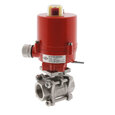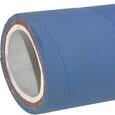Materials Used In a Beer Brewing System
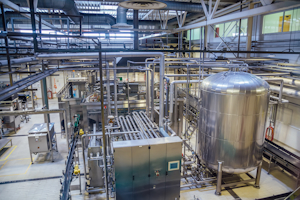
Figure 1: Stainless steel is a common material found in modern brewing systems.
In beer brewing, selecting appropriate materials for each component of the brewing system is crucial to ensure both the beer's quality and the equipment's longevity. From valves and fittings to pipes, each piece plays an essential role in the transfer and transformation of ingredients into the final brew. The type of material chosen for these components is essential, especially when they come into direct contact with the beer, as it can significantly impact the taste and safety of the product. Stainless steel, brass, and copper are common metals, each offering unique benefits and potential drawbacks. Additionally, non-metallic materials like various sealants and hoses are selected for their chemical resistance and suitability for food contact.
Table of contents
View our online selection of valves and hoses!
Valves, fittings, and pipes
Many types of brewing valves, fittings, and pipes are used to construct a beer brewing system, whether a large commercial system or a small homebrew system. Understanding which components to use is one thing, and knowing which materials to select is another. When selecting material for a valve, fitting, or pipe, the primary question is whether or not the component will come into contact with beer or any other ingredient used to brew the beer. To understand how different materials interact with different parts of the brewing process, read our chemical resistance guide.
Materials for components that contact beer
Brewing components are likely to contact beer in most, if not all, of the following systems:
- Mash tun
- Lauter tun
- Brew kettle/boil kettle
- Heat exchangers and wort chillers
- Fermentation tanks
- Conditioning/Secondary fermentation tanks
- Bright beer tanks/serving tanks
- CIP (clean-in-place) systems
- Packaging lines
There are a few standard metal material options for brewing components that contact beer:
- Stainless steel: valves, fittings, and pipes
- Brass: valves and fittings
- Copper: fittings and pipes
Stainless steel is the industry standard primarily because it can be sterilized with aggressive chemicals without corroding and handle CIP cleaning. Stainless steel grades 304 and 316 are the most commonly selected. While having properties that allow it to function in high-temperature and pressure applications, stainless steel's primary drawback is its high upfront cost.
Brass is a common alternative to stainless steel in brewing systems, but these components cannot be cleaned as aggressively as stainless steel components can. Another drawback to choosing brass is that it may contain lead. If selecting brass for brewing components that will contact beer, be sure to have non-aggressive cleaning chemicals and soft cleaning tools. Also, search for lead-free brass options.
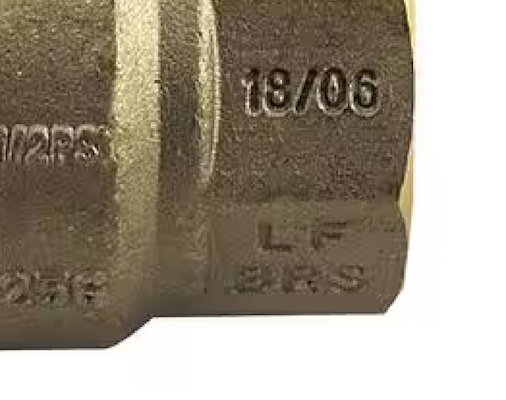
Figure 2: The LF BRS markings on this ball valve indicate its body is constructed of lead-free brass.
Copper beer brewing equipment has a long history in brewing. It is known for its excellent thermal conductivity and ease of fabrication. This makes copper suitable for components such as copper beer chillers and copper cooling coils for beer. A stable oxide layer prevents chemical interaction and metallic flavors from leaching into the beer, provided it is appropriately maintained. Regular cleaning with dish detergent or sodium percarbonate-based cleaners is recommended. Avoid excess scrubbing that can damage the protective oxide layer. Copper can develop a toxic blue-green oxide called verdigris, which requires careful removal with vinegar or an oxalic acid-based cleaner. Bleach and hydrogen peroxide should be avoided with copper as they can cause blackening and don't prevent further corrosion.
Materials for components that do not contact beer
There are more material choices for brewing components that do not contact beer. These components may be found in the following brewing systems:
- Cooling systems
- External piping and hoses
- Ventilation and exhaust systems
- Safety valves and pressure relief systems
- Heating elements
- Control panels and interfaces
The primary advantage of selecting different materials for these non-contact systems is saving money on the cost of the entire system. This is especially true when stainless steel components are used in the systems that contact the beer. In the non-contact systems, brass components, which are generally less expensive, can be selected. However, before choosing any valve or fitting, ensure its properties can withstand the temperature and pressure requirements.
Materials for seals
Valves and fittings often have seals to help provide a tight, leak-proof connection. For brewing systems, the following materials can be selected for seals:
- EPDM (Ethylene Propylene Diene Monomer): This synthetic rubber is highly resistant to heat, water, and various chemicals, including acids and alkalis. It is widely used in the food and beverage industry due to its excellent resistance to sanitizing agents and its compliance with FDA standards for food contact.
- PTFE (Polytetrafluoroethylene): PTFE, also known as Teflon, is known for its chemical inertness and ability to withstand extreme temperatures, making it ideal for use in brewing systems. It does not affect the beer's flavor and is resistant to most cleaning agents. PTFE gaskets and seals are also FDA approved for food contact.
- Silicone: Silicone seals are also frequently used due to their flexibility, wide temperature range tolerance, and resistance to many types of chemicals. They are non-reactive with beer and are safe for food contact.
- Viton (Fluorocarbon Rubber, FKM): This is another type of synthetic rubber that is highly resistant to chemicals and temperature variations. It's used in applications where seals are exposed to aggressive chemicals or higher temperatures, though it is generally more expensive than EPDM and silicone.
- Buna-N (Nitrile Rubber, NBR): Buna-N is less commonly used in high-temperature applications or with aggressive chemicals, but it is suitable for some aspects of brewing where these conditions are not a concern. It's known for good abrasion resistance and is suitable for use with oils and some alcohols.
Brewing hoses
Many hoses are used throughout a brewing system to transport beer and other fluids that help throughout the process. Table 1 lists the most commonly used materials used for these hoses and their common applications.
Table 1: Materials used for hoses in a beer brewing system
| Material | Suitability | Applications |
| Chlorobutyl | Highly resistant to acid, heat, and abrasion; less permeable to gasses; excellent resistance to cleaning solutions; suitable for sanitary applications. | Used for transferring beer between vessels; can handle high temperatures during hot wort transfer. |
| UHMW | Excellent chemical resistance, low moisture absorption, very low coefficient of friction; FDA approved for food contact. | Employed in handling grain, transferring beers, situations requiring high abrasion resistance. |
| PVC | Versatile, affordable, good chemical resistance; transparent; FDA approved for food contact. | Used for lower temperature transfers, such as cold liquids, and general water and wort transfer at low pressures. |
| Silicone | Heat resistant, flexible, non-reactive surface; tasteless and odorless to avoid flavor contamination. | Commonly used for hot wort transfer; it connects to brewing vessels with movement or temperature changes. |
| Nitrile | Resistant to oils, solvents, harsh chemicals; durable with good heat resistance. | Used for transferring oils and hydrocarbon-based products, including certain cleaning/sanitizing agents in the brewery. |
| EPDM | Extremely resistant to weathering, UV, ozone, and many chemicals; withstands high temperatures; suitable for food contact. | Used for hot water and steam applications, cleaning, sterilization processes, and cold/hot wort transfer. |
| PTFE (Teflon) | Almost universal chemical resistance, extreme temperature handling, non-stick surface; FDA approved for food contact. | Used in high temperature and chemical resistance applications; transferring ingredients, hot wort, or finished beer; situations requiring a cleanable surface to prevent bacterial build-up. |
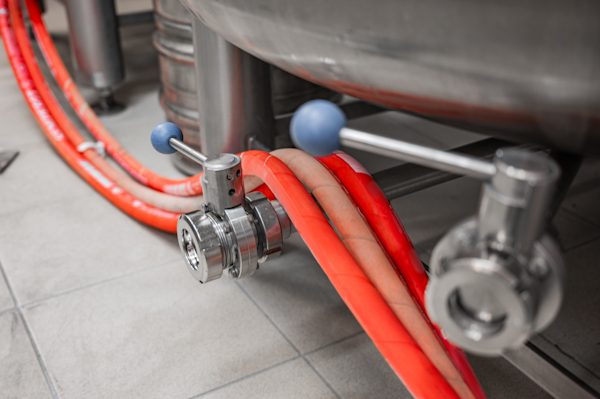
Figure 3: Hoses are used throughout a beer brewing system.
FAQs
What is brewing equipment made of?
Stainless steel is the most popular choice in the brewing industry because it is easy to clean and can handle higher operating temperatures and pressures.
What is a beer hose?
A beer hose is a part of a brewing system that transports beer from one part of the system to another. For example, from a keg to a tap.
Can brass be used for brewing beer?
Yes, brass can be used. However, there is some concern over the lead content possibly found in brass. Lead-free brass options are preferable.




